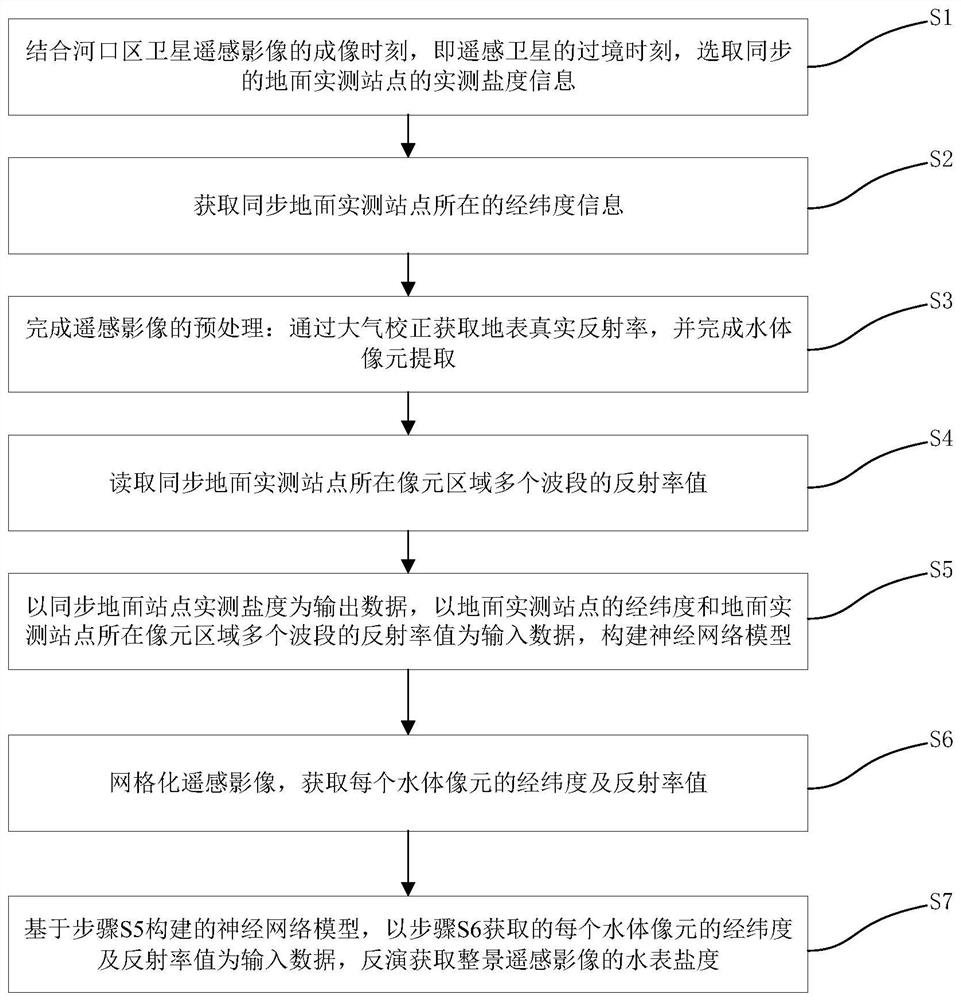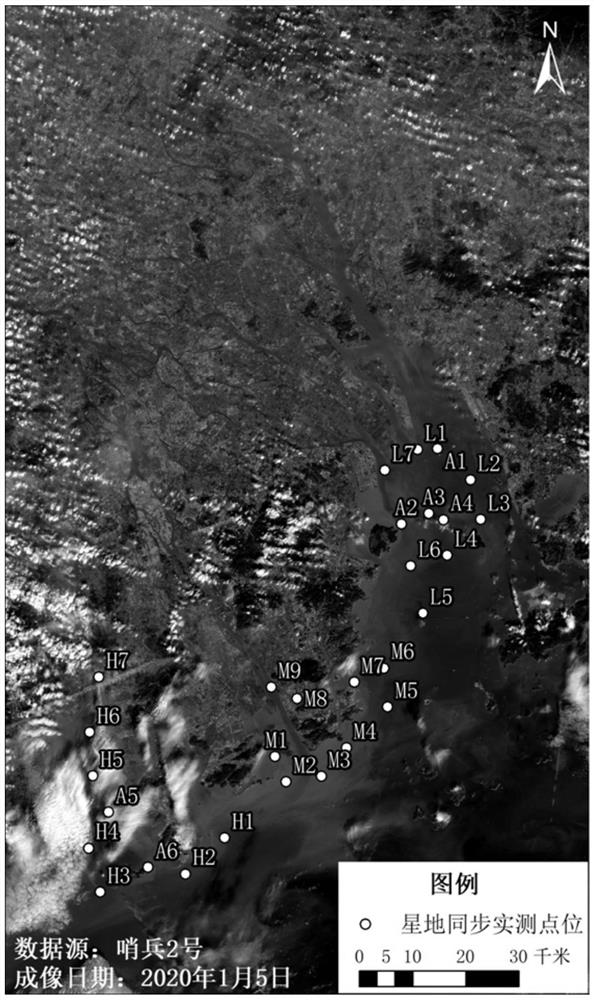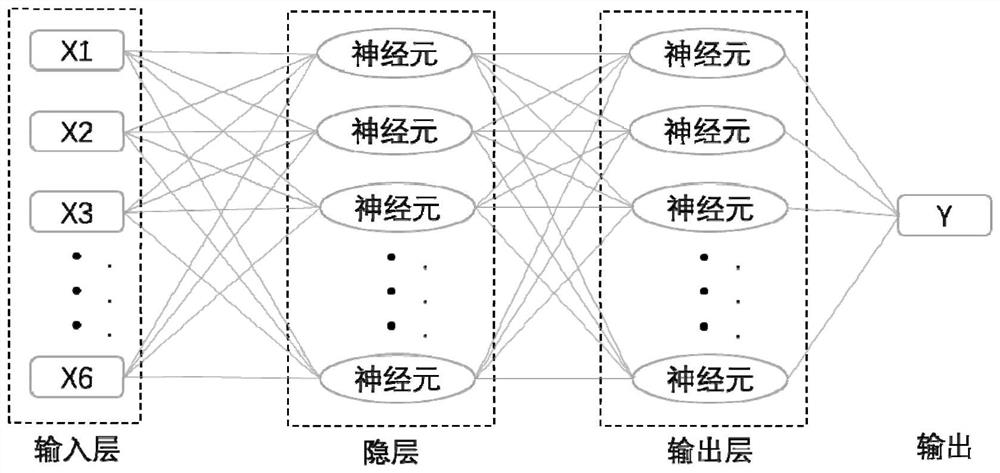Remote sensing inversion method and system for water meter salinity of estuary region based on satellite-ground collaboration,
A remote sensing inversion and salinity technology, applied in the field of water environment monitoring, can solve the problems of poor universality and strong experience, and achieve the effect of improving the inversion accuracy
- Summary
- Abstract
- Description
- Claims
- Application Information
AI Technical Summary
Problems solved by technology
Method used
Image
Examples
Embodiment 1
[0056] Such as figure 1 As shown, this embodiment provides a remote sensing retrieval method for water surface salinity in the estuary area based on satellite-ground coordination, including the following steps:
[0057] S1: Combining the imaging time of satellite remote sensing images in the estuary area, that is, the transit time of remote sensing satellites, select the measured salinity information of synchronous ground measurement stations; specifically include:
[0058] S1.1: Query satellite remote sensing images of the estuary area; satellite images can be ESA Sentinel 2, domestic Gaofen series (Gaofen 1, Gaofen 2, Gaofen 4, Gaofen 6, etc.), Multispectral remote sensing images such as Domestic Resources No. 3 and US LANDSAT. In this example, the multispectral images of Sentinel No. 2 are used as the remote sensing data source to obtain the water surface salinity distribution of the Pearl River Estuary. According to the inquiry website of Sentinel series satellite images ...
Embodiment 2
[0083] This embodiment provides a remote sensing retrieval system for water surface salinity in the estuary area based on satellite-ground coordination, including a memory and a processor. The following steps are realized when the remote sensing retrieval method of water surface salinity in the estuary area based on satellite-ground coordination is executed by the processor: including the following steps:
[0084] S1: Combining the imaging time of satellite remote sensing images in the estuary area, that is, the transit time of remote sensing satellites, select the measured salinity information of synchronous ground measurement stations;
[0085] S2: Read the latitude and longitude information of the synchronous ground measurement site, record the longitude as X1 and the latitude as X2;
[0086] S3: Complete the preprocessing of remote sensing images, obtain the true reflectance of the ground surface through atmospheric correction, and complete the extraction of water body pix...
PUM
 Login to View More
Login to View More Abstract
Description
Claims
Application Information
 Login to View More
Login to View More - R&D
- Intellectual Property
- Life Sciences
- Materials
- Tech Scout
- Unparalleled Data Quality
- Higher Quality Content
- 60% Fewer Hallucinations
Browse by: Latest US Patents, China's latest patents, Technical Efficacy Thesaurus, Application Domain, Technology Topic, Popular Technical Reports.
© 2025 PatSnap. All rights reserved.Legal|Privacy policy|Modern Slavery Act Transparency Statement|Sitemap|About US| Contact US: help@patsnap.com



